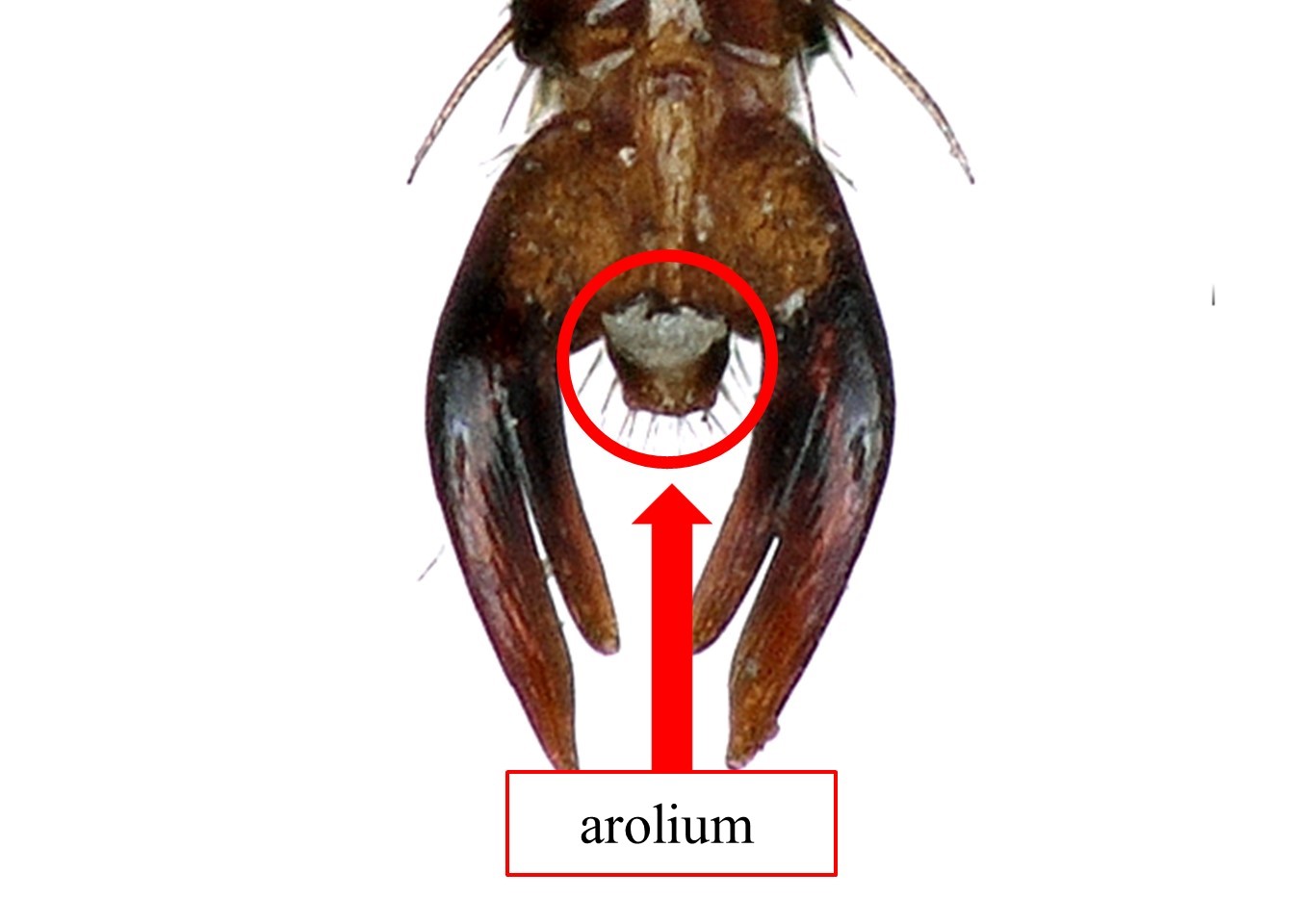Family: Megachilidae
Subfamily: Megachilinae
Tribe: Megachilini
Genus: Heriadopsis Cockerell, 1931
Subgenera: none
Common name: none
Heriadopsis range in body length from 8–9 mm and have slender, slightly elongate bodies (Michener 2007Michener 2007:
Michener, C.D. 2007. The Bees of the World (2nd ed.). Johns Hopkins University Press, Baltimore and London, 953 pp.). They have black integumentintegument:
a tough, protective outer layer
with white hairs on the basalbasal:
originating at the foundation of a structure
grooves of T2T2:
the segments on the top side of the abdomen, often abbreviated when referring to a specific segment to T1, T2, T3, T4, T5, T6, or T7 and T3T3:
and T3T3:
the segments on the top side of the abdomen, often abbreviated when referring to a specific segment to T1, T2, T3, T4, T5, T6, or T7 as well as on the apices of the tergaterga:
as well as on the apices of the tergaterga:
the segments on the top side of the abdomen, often abbreviated when referring to a specific segment to T1, T2, T3, T4, T5, T6, or T7 (Michener 2007Michener 2007:
(Michener 2007Michener 2007:
Michener, C.D. 2007. The Bees of the World (2nd ed.). Johns Hopkins University Press, Baltimore and London, 953 pp.).
Heriadopsis consists of two species, H. striatula and H. whiteana (Michener 2007Michener 2007:
Michener, C.D. 2007. The Bees of the World (2nd ed.). Johns Hopkins University Press, Baltimore and London, 953 pp.; Eardley 2013Eardley 2013:
Eardley, C. 2013. A taxonomic revision of the southern African leaf-cutter bees, Megachile Latreille sensu stricto and Heriadopsis Cockerell (Hymenoptera: Apoidea: Megachilidae). Zootaxa 3601 (1): 1ndash;133.); none are known to occur in the U.S. or Canada.
(modified from Michener 2007Michener 2007:
Michener, C.D. 2007. The Bees of the World (2nd ed.). Johns Hopkins University Press, Baltimore and London, 953 pp.)
 without carinacarina:
without carinacarina: with broadly bilobed preapicalpreapical:
with broadly bilobed preapicalpreapical: is nearly impunctateimpunctate:
is nearly impunctateimpunctate:Heriadopsis resembles the Megachile subgenera M. (Chelostomoda), M. (Chelostomoides), and M. (Hackeriapis) in body form, but can be differentiated by the presence of aroliaarolia:
the cushion-like pad between the tarsal claws found at the ends of some bees' legs
 on the front and middle legs (Michener 2007Michener 2007:
on the front and middle legs (Michener 2007Michener 2007:
Michener, C.D. 2007. The Bees of the World (2nd ed.). Johns Hopkins University Press, Baltimore and London, 953 pp.).
There are no known invasives.
Heriadopsis occurs in Congo, Zimbabwe, Malawi, and South Africa (Michener 2007Michener 2007:
Michener, C.D. 2007. The Bees of the World (2nd ed.). Johns Hopkins University Press, Baltimore and London, 953 pp.; Eardley 2013Eardley 2013:
Eardley, C. 2013. A taxonomic revision of the southern African leaf-cutter bees, Megachile Latreille sensu stricto and Heriadopsis Cockerell (Hymenoptera: Apoidea: Megachilidae). Zootaxa 3601 (1): 1ndash;133.).
Distribution map generated by Discover Life -- click on map for details, credits, and terms of use.
Eardley, C. 2013. A taxonomic revision of the southern African leaf-cutter bees, Megachile Latreille sensu stricto and Heriadopsis Cockerell (Hymenoptera: Apoidea: Megachilidae). Zootaxa 3601(1): 1-133
Michener, C.D. 2007. The Bees of the World (2nd ed.). Johns Hopkins University Press, Baltimore and London, 953 pp.